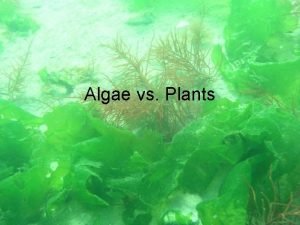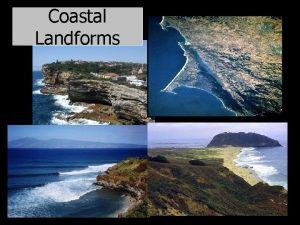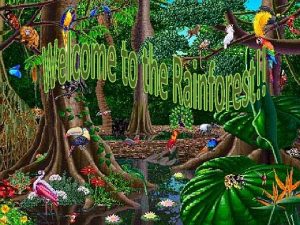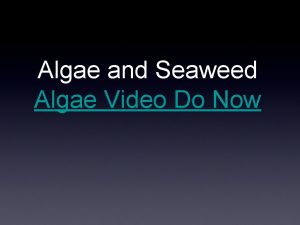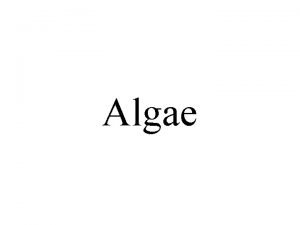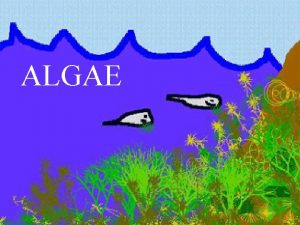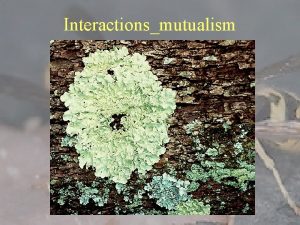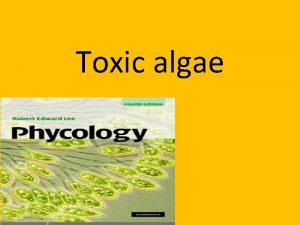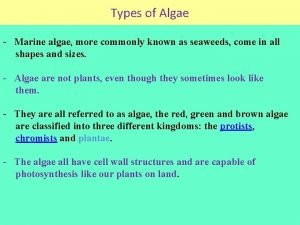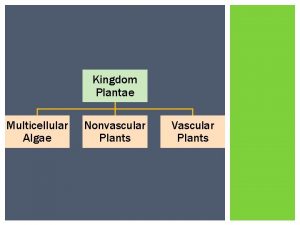Marine Science Marine Algae Seagrasses and Emergent Plants










- Slides: 10

Marine Science: Marine Algae, Sea-grasses and Emergent Plants

Producers in the Marine Environment Ø Algae, sea-grasses and emergent plants constitute common marine plants. Ø All live in photic zones because all perform photosynthesis. Ø Photosynthesis occurs through the following reaction: 6 CO 2 + 6 H 2 O C 6 H 12 O 6 + 6 O 2 Ø Algae live in the Neritic Province (above the Continental Shelf), and the Epipelagic Zone of the Oceanic Province. Ø Sea-grasses are rooted to the seafloor and must live in the Neritic Province in order to have adequate light. Ø Emergent plants live in the littoral zone.

Marine Algae Ø Macroscopic marine algae were once classified among the protists, but have now been moved back to the plant kingdom. Ø Microscopic algae, such as diatoms, are still categorized with the protists. Ø Macroscopic algae are nonvascular plants, which means that they lack vascular tissue and have no true roots, stems and leaves. Ø The macroscopic algae are divided into three phyla.

Phylum Chlorophyta Ø Phylum Chlorophyta includes the green algae (e. g. Ulva, or sea lettuce). Ø These plants have chlorophyll and other pigments similar to vascular plants. Ø There are many freshwater species in addition to the species found in the marine environment.

Phylum Phaeophyta Ø Phylum Phaeophyta includes the brown algae (e. g. kelp). Ø Brown algae have the pigment fucoxanthin, in addition to chlorophyll. Ø These algae are almost entirely marine species. Ø They are the largest algae— some are longer than 100 ft. Ø Brown algae tend to grow in colder ocean waters (with the exception of Sargassum, which is common in the Gulf Stream).

Phylum Rhodophyta Ø Phylum Rhodophyta includes the red algae (e. g. Irish moss). Ø Like brown algae, most red algae are found in the marine environment. Ø Red algae contain the pigment phycoerythrin in addition to chlorophyll. Ø Because of their accessory pigments, red algae can collect light in both the photic and disphotic zone, and are found in deeper areas than other algae.

Sea-grasses Ø Sea-grasses are vascular plants that have adapted to life underwater. They are totally submergent (meaning that no part of them rises above the water’s surface). Ø Sea-grasses are angiosperms (flowering plants), related to the grasses we have on land. Ø There are three common varieties of sea-grass in Florida: o Turtle grass (Thalassia testudium) o Shoal grass (Halodule wrightii) o Manatee grass (Syringodium filiforme)

Functions of Sea-grasses Ø Sea-grasses are useful in a number of ways: o They provide oxygen for gilled animals in the water. o They provide food and are the base of many food chains. o They assist in maintaining water clarity by trapping sediments. o They reduce erosion and stabilize soft sediments. o They provide shelter for smaller animals and hence, are often considered the nursery grounds of the sea.

Emergent Plants Ø Emergent plants are vascular plants that are rooted in the bottom, below the water’s surface, but whose stems and leaves emerge from the water. Ø These plants are salt-tolerant and help stabilize shorelines. Ø Examples include mangrove trees (red, black and white), salt marsh cord grass (Spartina), rushes (Juncus), and salt grass (Distichlis)

Mangroves Ø Mangroves are simply salt-tolerant trees. In the U. S. there are three types: 1. Red mangrove (Rhizophora mangle)—the most seaward growing of the mangroves; not cold tolerant; has characteristic prop roots to stabilize it; forms mangrove islands; is a salt excluder (eliminates salt at the root). 2. Black mangrove (Avicennia germinans)—most cold tolerant; upper littoral; has pneumatophores (“snorkel roots”)for gas exchange; salt excreter (leaves excrete salt from glands on underside). 3. White mangrove (Laguncularia racemosa)—grows inland from red and black mangroves; not cold tolerant; important for erosion protection; has nectar glands at the base of each leaf.

